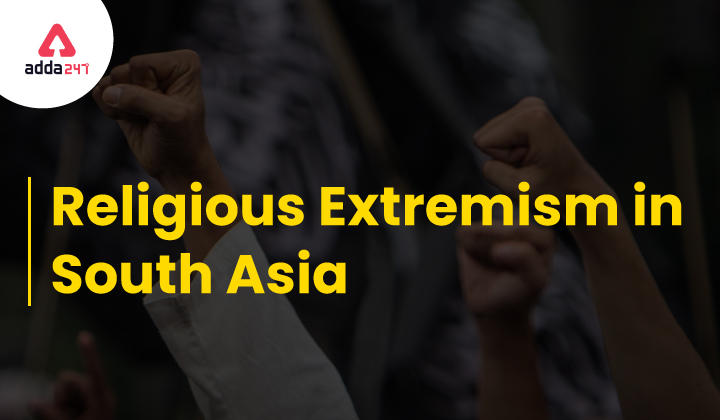Context:
Faith-based insecurity turning into serious conflicts both within and among South Asian countries. Recently, Durga Puja pavilions, Hindu temples and homes were attacked in Bangladesh. These attacks followed rumours that the Koran had been desecrated at a pandal.
Background:
Religious tension is not new in the Indian subcontinent. Conflicts often break out among different religious groups, and minorities are targeted. The 1992 Babri Masjid demolition in Ayodhya caused riots which led to the deaths of about 2,000 people. The 1993 Bombay bombings, the 2019 Easter attacks in Colombo, and the frequent terror attacks in Pakistan over the past decade are other examples.
Case Study: Bangladesh
Conflict:
- In Bangladesh, Hindus make up about 9% of the population and Muslims 90%
- Attacks against the Hindu minority are either retaliations to acts committed in the name of religion within the country or neighbouring India or due to the extremist views of some Muslims.
- For instance, the demolition of the Babri Masjid in Ayodhya instigated a violent response in Bangladesh and mobs started demolishing multiple Hindu temples.
- The Citizenship (Amendment) Act passed in the Indian Parliament in 2019 was a faith-based test of citizenship and instigated rallies and protests across the subcontinent. Ms Hasina(the PM of Bangladesh) called the law “unnecessary”.
Government Response:
- Takes strict action against religious extremist groups
- promotes the celebration of festivals of all religions by ensuring security at religious sites on festival days.
- Muslims visit Hindu temples on Durga Puja or celebrate Holi and invite Hindus on Eid.
- A strong anti-terrorism wing tackles religious extremist attacks.
- The anti-terrorism unit has prevented countless planned attacks and jailed numerous extremist groups.
- Bangladesh has not only cracked down on terror groups since the attack of the local café Holey Artisan in July 2016 but also prevented gatherings of religious protesters to prevent violence.
- For example, a recent gathering of Muslim extremist groups in protest against France’s anti-Islamic laws was disrupted by law enforcers.
What Should be Done to Stop Religious Hatred?
- The rise of the Taliban in Afghanistan is a wake-up call to South Asia’s political leadership to form a united front against all forms of religious dogma and extremism.
- South Asian political leadership need a clear vision and courage to stand together to send an unequivocal message of zero tolerance against all forms of religious extremism and bigotry.
- When religion becomes a tool for achieving political mileage, the resulting flames of hatred and intolerance quickly spread.
- This has the potential of becoming a wildfire that devours everything that comes along the way.
- Such fire and fury can only hurt this region’s socioeconomic aspirations.
- In the time of social media and easy access to information spreading rumours and hatred is the easiest thing to do. So a joint effort is needed from all the stakeholders to come together for escaping future conflicts.
- South Asian states should continue to extend full political liberties to all people regardless of religion, ethnicity, language, or nation.
Conclusion:
In this so-called modern world harmony, religious coexistence and tolerance are all under serious threat. Neither the World nor the South Asian region can afford such myopia when there are so many burning issues to resolve such as poverty alleviation, climate change and food security. So, for a better solution, the leaders of this region must come together with broad minds and take humanity into consideration. As “All religions teach people to be good people.”



 TSPSC Group 1 Question Paper 2024, Downl...
TSPSC Group 1 Question Paper 2024, Downl...
 TSPSC Group 1 Answer key 2024 Out, Downl...
TSPSC Group 1 Answer key 2024 Out, Downl...
 UPSC Prelims 2024 Question Paper, Downlo...
UPSC Prelims 2024 Question Paper, Downlo...




